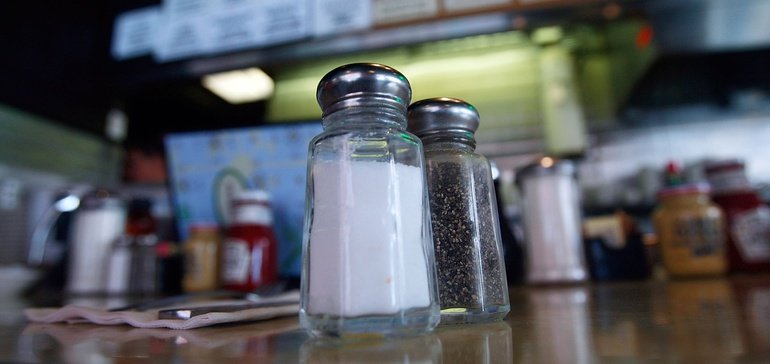After 5 years, FDA codifies salt reduction targets

Dive Brief:
- The U.S. Food and Drug Administration released voluntary sodium reduction guidelines for 163 categories of processed food, including baby food, snacks and foodservice items. These guidelines, which have been pending since 2016, are nonbinding recommendations for manufacturers and foodservice to follow for the next two and a half years in order to cut down on the average consumer’s sodium intake.
- These targets will help reduce average sodium consumption from 3,400 mg per day to 3,000 mg a day, acting FDA Commissioner Janet Woodcock and Center for Food Safety and Applied Nutrition Director Susan Mayne said in a joint statement. While this is still more than the 2,300 mg of sodium per day recommended in the most recent Dietary Guidelines for Americans, Woodcock and Mayne said the gradual reduction will be beneficial to public health.
- Sodium consumption has been linked to several health problems, including heart disease, high blood pressure and stroke. According to 2016 research from the Centers for Disease Control and Prevention, 90% of children and 89% of adults consume more than the recommended sodium levels. The agency estimates more than three-quarters of the sodium Americans’ consume comes from processed and restaurant foods.
Dive Insight:
While policymakers have long said sodium reduction is vital, the policy released Wednesday is the first movement the federal government has taken on salt reduction in more than five years.
Even though public comment was taken into consideration when finalizing this document — the FDA received about 200 comments, according to the announcement of the final guidance in the Federal Register — very little is new here. The most important tenets have not changed: These are still voluntary guidelines, and they still wouldn’t take consumers’ salt consumption down to what researchers say is an acceptable level.
Considering the sluggish wheels of federal policy — not to mention the fact that these guidelines were proposed in the waning days of President Obama’s tenure and there have been two administration changes since then — it should not be surprising that these guidelines took so long to finalize.
Still, the five-year process at the FDA is relatively fast. The Center for Science in the Public Interest petitioned the FDA to revoke salt’s generally recognized as safe status in 2005, after first urging the government to set salt limits for products in 1978. After receiving no response to its petition for a decade, CSPI sued the federal government in 2015, saying the FDA’s failure to regulate salt is contributing to tens of thousands of deaths annually. The lawsuit helped spur the draft voluntary guidelines in 2016.
“While we’re glad the Biden administration has released the short-term 2-year sodium reduction targets, the federal government has much more it can do to encourage the industry to adopt them, and much more it could do to educate consumers about the importance of sodium reduction,” CSPI said in a statement on its website Wednesday.
CSPI founder Michael Jacobson, who stepped back from the agency in 2017, was more blunt in an interview with The New York Times.
“It’s just been very sad to see the government be so lackadaisical about such a serious health problem,” Jacobson told the newspaper.
Since consumer groups such as CSPI have started pushing the government to change its guidelines on salt, the food industry also has modified its thinking.
A study published in the Journal of the American Medical Association in 2017 found CPGs had reduced their salt content by 12% from 2000 to 2014, with the largest reduction coming since 2005. Individual CPG companies have set their own salt reduction goals, which many have met and even exceeded. Even the Salt Institute, the industry group that promoted salt for more than a century, quietly shut down in 2019.
The FDA couldn’t move forward with more stringent or mandatory salt-reduction guidelines until the proposed voluntary ones were codified. While these guidelines are voluntary for the next two and a half years, it isn’t the end of federal attention to salt reduction. Longer-term or mandatory guidelines could be proposed for when these expire.
What this may symbolize more than anything is the FDA is clearing out its backlog of not-quite-finalized food industry policies. It still leaves other long-awaited regulations, including definitions of “natural” and “healthy,” to be published.
Source: fooddive.com

